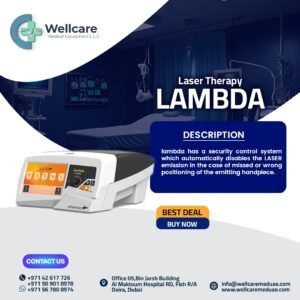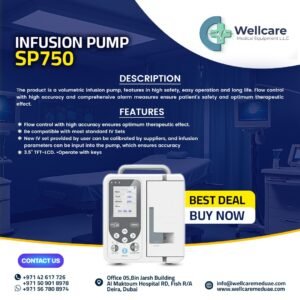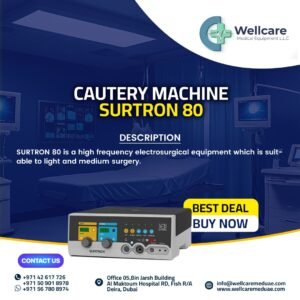Orthopedic Cast Padding: A Vital Layer of Comfort and Protection by Well Care Medical Equipment LLC
When it comes to fracture recovery, casts are the most visible part of treatment, providing the rigid support needed for bones to heal. However, there’s an unsung hero beneath every cast that makes all the difference in comfort and protection: orthopedic cast padding. Well Care Medical Equipment LLC is proud to offer high-quality orthopedic cast padding that plays a crucial role in the healing process by enhancing comfort, preventing skin issues, and supporting the structure of the cast.
Why Orthopedic Cast Padding Matters
Orthopedic cast padding may not seem like much, but this soft, flexible layer is essential for ensuring patients remain comfortable and protected throughout their recovery. Placed directly on the skin before the hard cast is applied, padding provides a cushion that reduces friction and pressure between the skin and the rigid cast material. This barrier is key to preventing common issues associated with casts, such as skin irritation, chafing, and sores. Well Care Medical Equipment LLC offers premium padding materials, including both cotton and synthetic options, to meet various needs and preferences, ensuring every patient can experience a comfortable healing journey.
Benefits of Well Care Medical Equipment’s Cast Padding
Our orthopedic cast padding offers numerous benefits, starting with moisture control. Wearing a cast can lead to sweating, which, if not managed, can cause bacterial growth, odors, and even skin infections. Our cotton padding is especially adept at wicking away moisture, keeping the skin dry and reducing these risks. For waterproof cast applications, our synthetic padding is water-resistant, allowing patients greater freedom with everyday activities, such as showering. Additionally, the soft, cushioned texture of our padding protects the skin from constant friction, significantly lowering the risk of pressure sores and blisters that can add discomfort during recovery.
Tailored for Patient-Specific Comfort
One of the key advantages of Well Care Medical Equipment LLC’s orthopedic cast padding is its adaptability. Our padding can be layered strategically by healthcare professionals to create custom support tailored to each patient’s needs. Extra padding may be placed around bony areas or joints to alleviate pressure, and the material can be adjusted to perfectly contour the shape of each patient’s limb, creating a secure, comfortable fit. This tailored approach not only enhances comfort but also ensures the cast fits securely, supporting a faster, more effective recovery process.
The Advantages of Orthopedic Cast Padding: Why It’s Essential for Recovery
Orthopedic cast padding is a critical yet often overlooked component in the recovery process for individuals with fractures or orthopedic injuries. Applied directly to the skin before the hard cast material is wrapped around the injured area, cast padding offers several advantages that go beyond simple comfort. These benefits are crucial in ensuring not only a more comfortable recovery but also the success and safety of the healing process itself.
1. Enhanced Comfort and Skin Protection
One of the primary advantages of orthopedic cast padding is its ability to enhance patient comfort. When a cast is applied, it creates a hard and often uncomfortable barrier around the injured area. Without a soft layer of padding, this direct contact between the rigid cast material and the skin can lead to irritation, friction burns, and painful pressure points. Cast padding, typically made from soft, breathable materials like cotton or synthetic fibers, provides a cushion between the cast and the skin. This reduces discomfort by preventing friction and pressure buildup, allowing the patient to move their limb without causing irritation or pain.
Additionally, the padding acts as a protective barrier against the cast material itself, which can sometimes cause allergic reactions or skin irritation. With padding in place, patients are less likely to experience redness, rashes, or discomfort, particularly in sensitive areas of the skin. This protective cushion ensures that patients remain comfortable, even during extended periods of cast wear, which is essential for long-term healing.
2. Moisture Control and Skin Health
Another significant benefit of orthopedic cast padding is its ability to manage moisture, which can be particularly important in preventing skin infections. Wearing a cast for weeks or even months can cause sweating, especially in warmer climates or during physical activity. Without proper moisture control, this sweat can build up and create an environment where bacteria and fungi thrive, leading to unpleasant odors or skin infections.
Cast padding materials, such as cotton, are naturally moisture-wicking, meaning they absorb sweat and help keep the skin beneath the cast dry. This prevents excessive moisture buildup and minimizes the risk of skin irritation, rashes, and fungal infections. For patients with waterproof casts, synthetic padding materials also offer water resistance, which allows patients to engage in everyday activities like showering or swimming without worrying about excess moisture compromising the healing process.
3. Pressure Distribution and Injury Protection
The role of orthopedic cast padding in distributing pressure evenly across the injured area is another key advantage. Cast padding helps to ensure that pressure is not concentrated in one area, which can otherwise lead to problems like restricted blood flow, nerve compression, or additional soft tissue damage. By creating a smooth and even surface under the cast, the padding prevents localized pressure points that could impede the healing process or even cause further injury.
This even distribution of pressure also helps the cast fit securely and comfortably, reducing the chances of the cast shifting or becoming loose over time. A well-padded cast will provide more stable support to the fractured area, reducing the risk of misalignment, movement, or the cast rubbing against the skin. This is especially important for patients who need to wear the cast for extended periods, as prolonged pressure without padding can lead to complications like ulcers or other tissue damage.
4. Customization for Patient Comfort
Another key benefit of orthopedic cast padding is its versatility and ability to be customized to the patient’s needs. Each injury and patient is unique, and cast padding can be strategically layered in areas where additional cushioning or support is required. For example, extra padding can be placed around bony prominences or joints where pressure tends to build up, ensuring that those areas remain comfortable and protected.
Furthermore, cast padding can be adjusted to accommodate the shape of the patient’s limb, providing a better fit and reducing the risk of discomfort. This customization not only enhances comfort but also ensures that the cast is positioned correctly to provide optimal support during the healing process. The ability to tailor the padding allows healthcare professionals to manage patient-specific factors like swelling or uneven limb shapes, making the recovery process smoother and more effective.
5. Improved Healing Environment
In addition to providing comfort and protection, orthopedic cast padding also contributes to creating a healthier healing environment for the injured area. By preventing direct contact between the skin and the hard cast, the padding reduces the likelihood of irritation or breakdown of the skin. A well-protected skin layer is essential for the healing of the injury, as the skin serves as a barrier against infection and helps maintain overall health. The moisture control offered by certain padding materials helps promote better circulation and skin condition, which can aid in the healing process.
Ultimately, the combination of cushioning, moisture management, and pressure distribution helps ensure that the healing process is not hindered by external factors like skin damage, discomfort, or irritation. Cast padding creates an optimal environment for the recovery of both the bone and the surrounding tissues, helping the patient heal more effectively and with fewer complications.
Orthopedic cast padding may seem like a small detail in the overall process of fracture recovery, but it plays an indispensable role in ensuring comfort, skin health, and the overall success of the healing process. By providing a soft barrier between the skin and cast, managing moisture, distributing pressure evenly, and allowing for patient-specific customization, cast padding significantly enhances the recovery experience. Whether it’s the ability to engage in daily activities with more ease or the prevention of skin irritations and infections, orthopedic cast padding offers essential benefits that go a long way in making the recovery process smoother, safer, and more effective for patients.
At Well Care Medical Equipment LLC, we understand that every element of recovery matters. Our orthopedic cast padding solutions ensure patients receive the protection, comfort, and care they deserve for a smooth, successful recovery journey.




